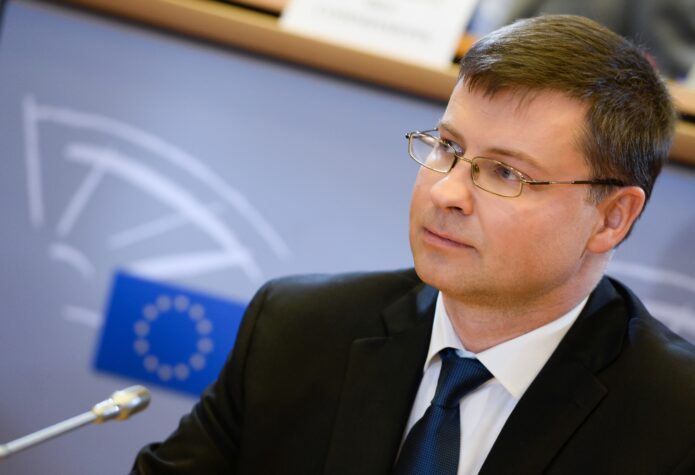Nordic and Baltic countries are sustainable finance frontrunners

Sustainable finance is crucial in preventing climate change, but policy-makers have to provide the right tools.
By Valdis Dombrovskis, Vice-President of the European Commission
There are many examples of climate leadership in the Nordic and Baltic countries.
Sweden, Finland and Latvia are top three in Europe when it comes to the share of renewables in gross energy consumption, with Denmark, Estonia, and Lithuania not far behind.
And only recently, the region has given us many hints of what a low-carbon future could look like. Take for example the 23rd of October, which was a windy day. On that day, 22.7 per cent of Europe’s entire electricity production came from wind, with Denmark, Sweden, and Lithuania among the top-ten producers. Consider also the month of September, when 45 per cent of all new cars sold in Norway were fully electric, making it a world record.
Such successes need to be scaled up across the continent and across the world. But this requires investment. In fact, we need large-scale investments into sectors such as energy, land, urban, infrastructure, and manufacturing. We estimate that Europe would need additional annual investments of EUR 180 billion to meet our Paris goals.
To make this happen, we need the financial sector to become fully engaged. Because some of it we can do with public funding, but far from all. In fact, finance is the missing link: without the financial sector on board, we cannot effectively tackle climate change.
So it is good to see that financial services providers in the Nordic region already understand the challenge, as well as the opportunities that it brings. For example, five out of ten global pension funds with the best approach to climate-related risks are based in the Nordic countries, according to the Asset Owners Disclosure Project. In the past five years, the three Nordic EU Members have issued over EUR 18.7 billion worth in green bonds. If we measure green bonds issued as a percentage of total bond issuances, the Baltic countries are doing even better than the Nordics, although from low levels.
Overall, the Nordics and the Baltics are leading by example. However, they cannot change the world’s carbon footprint alone. So the European financial sector needs to become fully engaged in this effort. And policy- makers have to give them the right tools to do so.
Three EU proposals
This is why we put forward an Action Plan on Sustainable Finance in March, which aims to do several things:
First, we want to incentivise banks, asset managers and companies to direct their capital toward greener projects. We have proposed a draft regulation to agree on EU-wide definitions on what is green and what is not. This sustainable finance taxonomy will provide clarity for investors and companies that want to invest in green and climate-friendly projects, or provide sustainable financial products for customers.
Our second proposal targets asset managers, institutional investors, and financial advisors. Studies show that while the number of investment managers that consider sustainability is rising, it is not increasing fast enough. Our proposal will require them to disclose how they integrate sustainability considerations into their investment and advisory processes.
The third proposal is about giving investors the tools to measure a financial product’s carbon footprint by using financial benchmarks. In particular, we are proposing to define standards for two types of climate-friendly benchmarks: low-carbon benchmarks, which have a reduced carbon impact; and positive carbon impact benchmarks, which help to decrease overall emissions in line with the two-degree target.
So far, the EU has achieved a 22 per cent reduction of carbon emissions compared with 1990. And we have a number of policies in place to go much further in order to reduce emissions by at least 40 per cent by 2030, which is our Paris goal.
These legislative proposals will help more money to flow into decarbonising our economy. In parallel, we are considering to include further climate-related issues in non-financial disclosures. We also aim to align EU requirements with the work of the Financial Stability Board’s Task Force on Climate-related Financial Disclosures.
Setting an example
The UN Intergovernmental Panel on Climate Change’s recent report on the 1.5-degree scenario underlines the urgent threat of climate change. Now, we call on EU Member States and the European Parliament to make rapid progress on the three legislative proposals within the current political mandate of the European Parliament.
European and global capital markets are one of the most powerful tools we have in the fight against climate change. However, in many places of the world, they are also one of the most overlooked.
Let us therefore set a positive example here in the Nordic and Baltic countries and work to make sustainable finance a reality in Europe and globally.
Mr Valdis Dombrovskis served as a member of NIB’s Control Committee in the period 1 January 2005 – 31 May 2006.